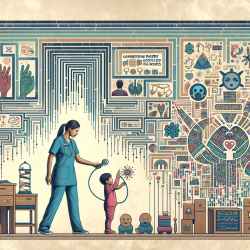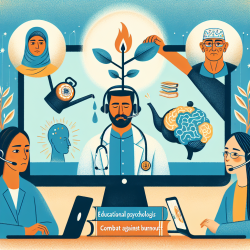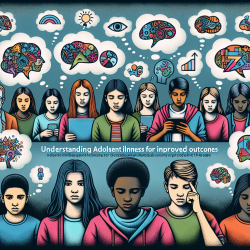Introduction: A New Era in Child Therapy
In the rapidly evolving field of speech-language pathology, data-driven decisions are crucial for achieving the best outcomes for children. One promising approach is the integration of patient-reported outcomes (PROs) into electronic health records (EHRs). This integration can enhance patient-provider communication and improve care delivery, as highlighted in the research article "Provider perspectives on the integration of patient-reported outcomes in an electronic health record" by Zhang et al. (2019). This blog will explore how practitioners can leverage these findings to refine their practice and ultimately benefit the children they serve.
The Power of Patient-Reported Outcomes
PROs are vital in capturing the child's voice in therapy. They include self-reported symptoms, functional status, and health-related quality of life, offering a more accurate reflection of the child's health status than clinician reports alone. Integrating these outcomes into EHRs can facilitate targeted conversations and automated triage, leading to more personalized and effective interventions.
Challenges in Integration
Despite their potential, integrating PROs into EHRs presents several challenges. The study by Zhang et al. (2019) identified barriers such as workflow disruptions, technical issues, and a lack of actionable data. These challenges can hinder the seamless adoption of PROs in clinical settings, affecting the delivery of care.
Overcoming Barriers: Recommendations for Practitioners
To harness the full potential of PROs, practitioners must address these challenges strategically. Here are some recommendations based on the study's findings:
- Optimize Data Collection: Ensure that data collection processes are streamlined and integrated into existing workflows to minimize disruptions.
- Enhance Data Visualization: Develop user-friendly interfaces that allow for easy interpretation of PRO data, enabling practitioners to make informed decisions quickly.
- Provide Training and Education: Educate all stakeholders, including clinicians, parents, and children, about the benefits and use of PROs to foster buy-in and engagement.
- Prioritize User Needs: Tailor the PRO system to meet the specific needs of different provider groups, ensuring that it supports their clinical tasks effectively.
Conclusion: A Call to Action
The integration of PROs into EHRs holds immense promise for improving child therapy outcomes. By addressing the challenges and implementing the recommendations outlined above, practitioners can create a more responsive and effective therapeutic environment. As we continue to explore and refine these systems, the ultimate beneficiaries will be the children, who will receive more personalized and impactful care.
To read the original research paper, please follow this link: Provider perspectives on the integration of patient-reported outcomes in an electronic health record.










